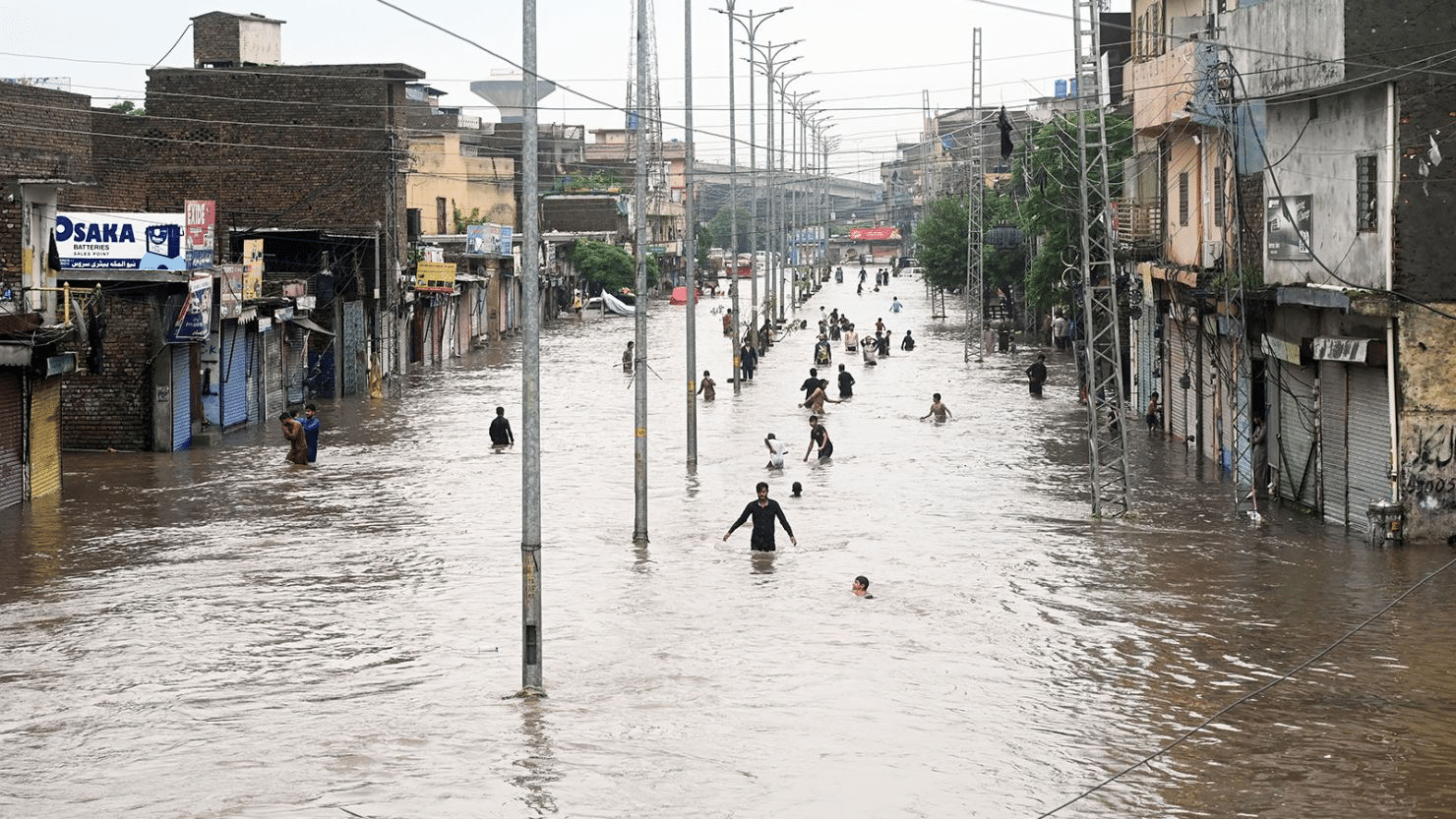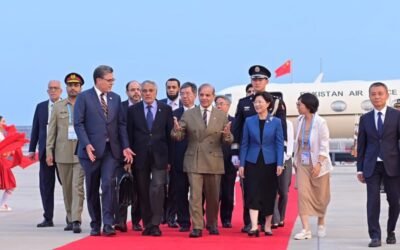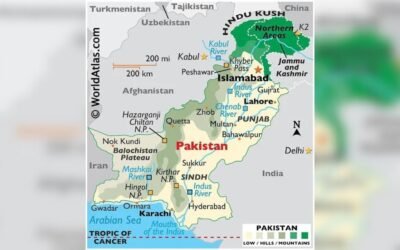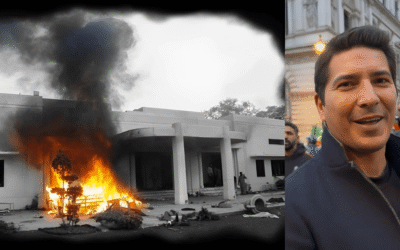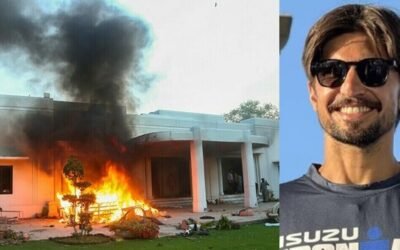Between June and July 2025, Pakistan experienced an exceptionally wet monsoon season, with rainfall 82% above average, resulting in flash floods in Punjab and Khyber Pakhtunkhwa. Over 178 lives were lost, mainly in Punjab, and villages across Rawalpindi, Swat, and Lahore were submerged. Earlier disasters—such as the 2022 floods that submerged a third of the country and claimed over 1,100 lives—have underscored the urgent need to enhance both preparedness and community-level safety.
The state, under the leadership of Prime Minister Shehbaz Sharif and Interior Minister Mohsin Naqvi, swiftly mobilized the NDMA, Rescue 1122, the army, and provincial disaster management agencies. Flood warnings, emergency operations, and Section 144 prohibitions were activated across Punjab and KP to prevent further loss of life. These responses not only underline the government’s commitment but also its proactive approach to disaster management, instilling a sense of reassurance and confidence in the state’s capabilities.

Source: DAWN E-Paper
Before the Flood: Preparedness Measures
1. Heed Official Advisories
NDMA flood advisories are critically important. Avoid camping, hiking, or traveling along rivers, nullahs, and flood-prone roads during heavy rains, as these leave vulnerable communities stranded in Swat and beyond. Install flood alarms and stay tuned to radio and TV stations for updates from PMD and NDMA.
2. Plan Your Evacuation
Prepare a “go-bag” with essentials, including medications, water, dry food, warm clothing, copies of identification documents, cash, and phone chargers. Keep family emergency contacts handy. Know your nearest rescue station, especially in areas such as Swat and the northern regions, where flash floods can isolate entire communities.
3. Fortify Your Home
Assess risk, move valuables and electronics above the ground floor. Block drains and gullies around your property to prevent water accumulation. Use sandbags if available, and always keep flood contact numbers ready.
During the Flood: Safety Protocols
4. Do Not Walk or Drive Through Water
Even shallow moving water (6 inches/15 cm) can sweep people or vehicles away. During urban flooding in Rawalpindi, residents were trapped in their cars due to underestimating the strength of flash flood currents. If trapped, exit immediately and ascend to the roof if nearby water levels cross the dashboard.
5. Avoid Rivers, Nullahs & Dams
Rivers like the Swat and Jhelum are experiencing flash floods with sudden surges. Recent incidents have seen tourists drown after being swept away. Avoid these risky spots, even if they appear calm.
6. Follow Rescue Instructions
Respond calmly to directives from Rescue 1122, the army, PDMA/EDMA teams. Boats, army helicopters, and rescue units worked tirelessly to save hundreds of villagers stranded on the water. Always comply and avoid risky rescue attempts alone.
After the Flood: Health and Recovery Tips
7. Prioritize Clean Water
Floodwaters are breeding grounds for waterborne diseases. Boil water or use purification tablets before drinking; this is necessary in areas where safe water sources have been contaminated, such as Charsadda.
8. Ensure Sanitation
Avoid contact with stagnant water, as it can carry bacteria, chemicals, and debris. Use insect repellents in flood zones to prevent vector-borne diseases like dengue and malaria (UNICEF reports tens of millions exposed).
9. Document & Report Damage
Photograph damaged property, infrastructure, or injuries. Share information with local PDMA/NDMA teams and your bank. Registration will help you access government relief and rebuilding programs.
Long-Term Resilience: Building Future Safety
10. Embrace Early Warning Systems
PMD and NDMA alerts are now disseminated via SMS, local mosques, and community speakers. In Swat, municipality and PDMA officials issued mosque announcements that likely saved many lives.
11. Infrastructure and Drainage
The World Bank-backed Sindh Resilience Project and NDMA efforts support drainage upgrades and embankment repair. Citizens are encouraged to stay engaged and report gullies and blocked drains to local authorities.
12. Community Training
Training programmes led by the NDMA, NIDM, and Rescue 1122 have been educating communities on first aid, evacuation drills, flood response, and sandbagging since 2007. Join local sessions to be better prepared next time.
State Coordination: Unified National Response
The 2025 floods in Pakistan showcased a unified and effective response across provincial and federal levels. Led by PM Sharif, daily briefings at the National Emergency Operations Centre, coordinated resource deployment, and activation of emergency sections, such as Section 144, all contributed to restricting risky movement. The ground and aerial rescues by Rescue 1122 and the army, along with public advisories from the NDMA, demonstrated a well-orchestrated approach that ensures lives and property are protected under state oversight.
Challenges remain: urban slums face slow water drainage, and the rescue capacity in remote villages needs enhancement. The state has committed to improving infrastructure and extending early warning coverage to rural areas. Public responsibility remains vital; families resisting evacuation or entering rivers during floods highlight the need for continued awareness and compliance with safety directives.
Pakistan has established a robust response framework, comprising NDMA guidance, Rescue 1122, army assistance, early warnings, and infrastructure improvements. But community participation, public compliance, and consistent risk communication are essential to saving more lives.
By following official guidelines, preparing evacuation plans, respecting advisories, avoiding floodwaters, and supporting long-term resilience efforts, every citizen becomes a partner in flood safety. Pakistan’s unity and state-led strategy enable the country to navigate climate extremes with preparedness and care. Each member of the society must participate in these efforts, as together, actively, we can transform each disaster into an opportunity for healing and strength, anchored in shared responsibility and collective action.
Together, state and society can transform each disaster into an opportunity for healing and strength, anchored in shared responsibility and collective action.

